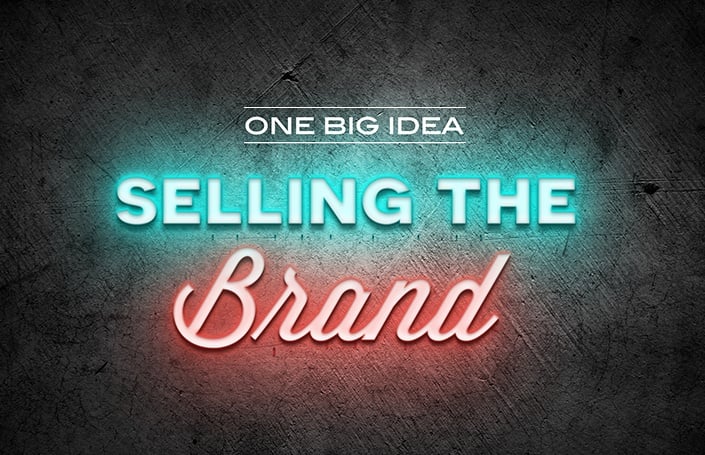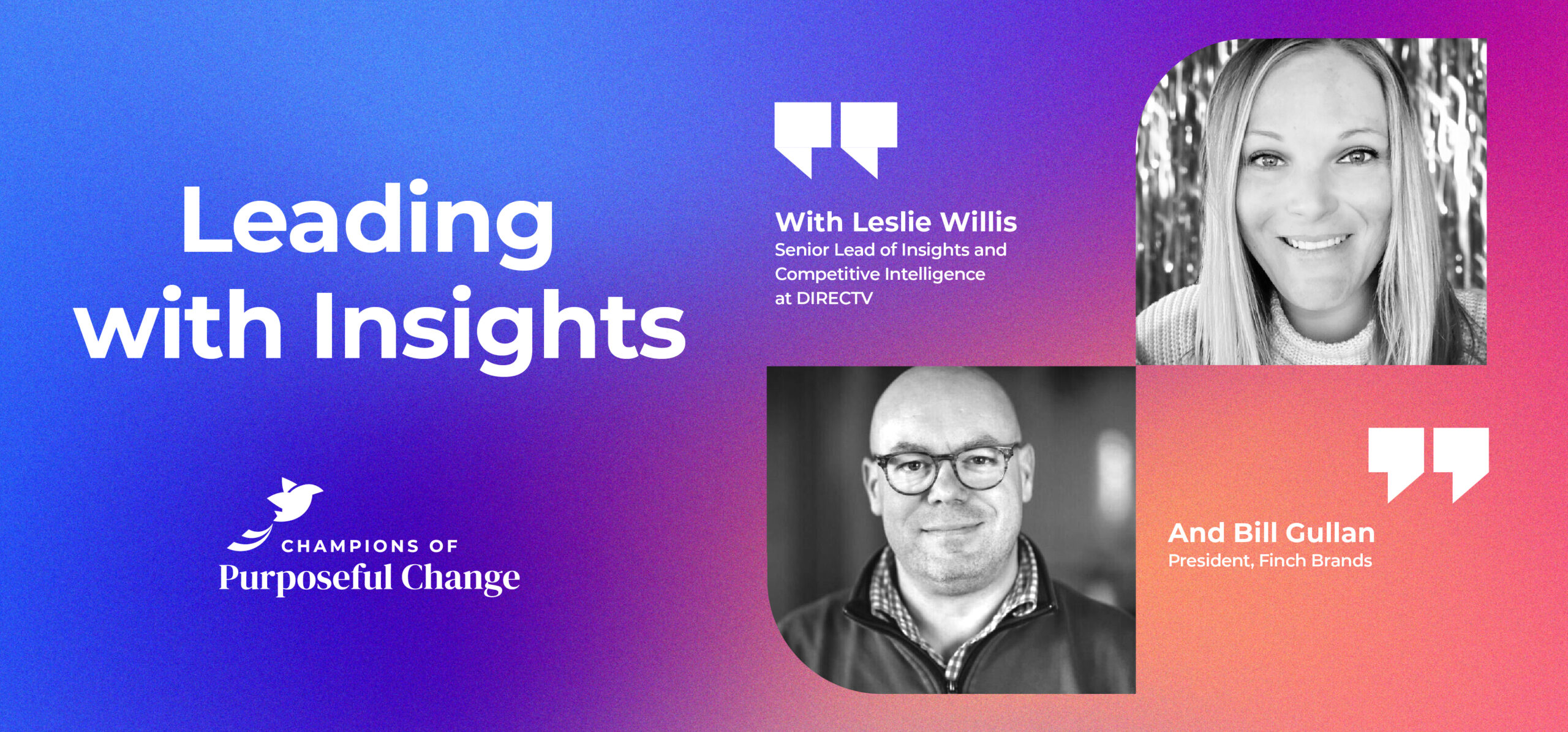One Big Idea: Selling the Brand

Many sales-driven organizations tend to overlook the supportive role the brand can play in assisting the sales force. In this week’s episode, Bill discusses the complementary role and value of brand marketing as a companion to selling efforts. If you like our podcast, please subscribe and leave us a rating!
Podcast: Download Subscribe: iTunes | RSSTranscription
Bill Gullan: Greetings, one and all. This is Real-World Branding. I’m Bill Gullan, President of Finch Brands, a premier boutique branding agency and this is One Big Idea. We’re calling this Selling the Brand, but the topic is really about the intersection of sales and the brand and brand marketing in particular. This comes up a lot for companies that may reach out to us, or otherwise, that are asking some form of the question, ‘I have a sales force. Why do I need to think about the brand?’
Before we get into that specifically though, let’s drill down into our own lives and I’ll try to make a point via a couple of analogies. If you look at resumes, the best ones, all of them really, folks will include where they went to school. Sometimes this was 10, 15, 20 years ago and often that educational experience has no relation to their level of aptitude in terms of what they’ve done in their career or how well they do the job that they might be applying for. So why we do keep including that and frankly, as Hiring Managers, why do we keep looking at it?
One, it does confirm a level of educational attainment, and maybe they had a really good GPA, maybe their major is kind of interesting, but I think the most important element of it is that it expresses something about the candidate. Maybe where they grew up or what their aesthetic is, what their interest level is. If you look at somebody who chose a liberal arts path versus something that is a little bit more pre-professional or you look at someone that is ivy covered, the fact of an institution, even though it was many years ago that that choice was made, is about going a little deeper into who that person is. I think this is roughly analogous to what a brand often provides as a frame for what to expect.
Another example from our lives is if you’re in a professional career, like I am, I get a ton of referrals or, ‘Could you talk to this person about their career?’ Or whatever it is. A lot of people who come through for networking or career purposes come over to me on email or voice mail or whatever it is. If you’re like me, you treat the ones who come from a source that you respect and that you trust more, you treat them differently. You go further for them; you try harder for them than the ones that come through randomly.
Part of that may reflect the closeness with one person versus another, but I think this is another example of how something related to what I guess we would call brand, which is referrer having good judgment. The referrer being an accomplished person, being a person with whom you have a strong personal relationship. It means something, it’s more than just quid pro quo. The fact that they bothered and their seal of approval exists on the resume or on the name of the person that they sent, it means something. That is sort of analogous to the role of brand and sales.
Third example, whenever you’re building a deck to sell something, there’s a reason why that typically starts with an overview of yourself and your company. The widget that you might be selling or service that you might be selling or desiring to sell through that presentation often has its own merits, it has it’s own features, specs, functionalities, pricing, and all the other things that people in a vacuum can use to make a decision this product versus that product. The reason why you start with the context, with the frame is because the brand matters. It’s trust, it’s reputation, it’s what to expect.
These are just examples that are fairly tactical and practical, but the point of them is that by analogy, selling is never an independent act that is completely disintermediated from the person doing the selling, the organization that he or she represents and all that that means. When people come to us and say, ‘Hey, we don’t need to focus on the brand because we have a sales force. We don’t have to market ourselves as a brand because we have a sales force.’ My answer typically is, ‘Au contraire, mon frere,’ because they’re wrong.
The power of the one-two punch of great selling and strong brands is indisputable and I could throw all sorts of data points, but I think it’s self-evidently true. The brand is a frame around the specific sale that you’re trying to make. When a new product, for example, comes from a trusted brand or a brand with whom you’ve done business in the past, you are far more likely to give it fair hearing or more than fair hearing.
There’s a reason why strong brands, the engine of strong brands, can extend into all of these different, new product categories. It is because of the fact they have earned the right to do that. The elasticity, so to speak, of their brands are far more significant than unknown players or unbranded entities.
If we represent organizations that have really a dominant sales culture where the sales force is expected to be sort of the overriding producer of new business as opposed to, ‘I distribute this through a supermarket and people buy my detergent or they don’t.’ If this is people driven and sales force driven, the brand is an incredible ally for members of the sales team.
A couple of practical ways for integrating brand marketing and brand thinking into selling efforts. These are, again, very practical and tactical. The first is, and I’ve eluded to it in one of our examples, is about presentation content. The storytelling around how and in what sequence one should present a product or a service is critically important, as we know. We often find with our clients and with others in the marketplace that it is very, very easy to lose the audience in a blizzard of features, attributes, specs, and claims that are really unemotional and product driven.
To really bring the power of brands into sales storytelling again, it really is about building a frame, so whether that is starting off a presentation with an overall description of you and of the company you represent and on what basis you have credibility to set forth that which you were seeking to sell. One way to integrate brand and sales is by making presentation content strongly and effectively balanced between company context and product, between rational and emotional, between personal and clinical.
The second way, and these are admittedly small ways to make a large point, bringing brand personality and brand heritage and history into day to day communications. Things like email signatures, for example, and again, this seems like the most tactical downstream thing in the world, but email signatures are an often overlooked way, in my personal opinion, of expressing something important, as well as driving consistency within a team – giving actual tangible voice to culture and to personality.
It doesn’t mean that your email signature should be, ‘Gonzo,’ by any means, but what it should do is effectively express the value, culture and personality of the organization that you represent. In small ways like that or things that salespeople use or should use, like thank you cards or other elements, there are ways to bring forth brand ideas and brand fact.
Thirdly, as one constructs the touch points in their sales process and manages and choreographs all of those different touch points, it is important to have an eye as you do it towards brand communications, brand expression, and brand personality.
It is very, very easy in a clinical, independent world to say, ‘I will send them this and then I will call them the week after and this is what I will say and then I will email them this case study and then I will seek to do a demo.’ Anyone can do that different stuff. What we encourage our sales force driven clients to do is to view that touch point map and cadence through the perspective of brand distinction and personality.
What that might mean is that, for example, if you are Finch Brands and you are a real-world branding agency, it makes sense rather than starting with an overview of the company, it makes sense to send a really, really strong quantitative and qualitative case study as an entrée. Rather than, ‘Hey, look at us,’ it’s, ‘Here’s how we help somebody a lot like you.’
As we think about brand personality and those elements that stand out about a company, it’s history, it’s engine, it’s culture, it’s attitude, it’s personality, but, we see this team of sales producers out there, who’ve relied on interpersonal charm and motor for years and years. There are ways to support their efforts by bringing to bear the power of brand expression within the framework of what they do.
From our perspective, companies that have strong brands, companies that are good marketers, and companies that are great sellers are those who succeed. You can’t over-rely on any one of those three to get it done if you’re in a category like this.
So, that’s One Big Idea: Selling the Brand. The underlying idea here is that sales processes and salespeople are strengthened, energized, and empowered by strong brands. Brands are a force multiplier when it comes to the ability to produce skilled and energetic sales teams. On that note, all the best to you as spring is springing. We’ll sign off from the Cradle of Liberty.







